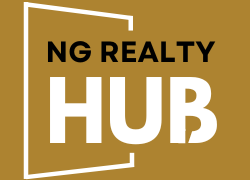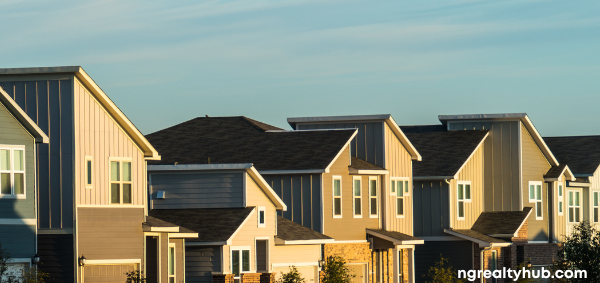Urban revitalization projects have the potential to transform neglected areas into vibrant, thriving communities, offering lucrative opportunities for real estate investment. This case study examines the successful real estate investment by Greenfield Properties in the revitalization of a previously declining urban neighborhood, Riverside Heights. We will explore the strategic decisions, key factors, and innovative approaches that contributed to the success of this investment, providing valuable insights for investors looking to capitalize on similar opportunities.
The Real Estate Investment Opportunity
Background of Riverside Heights
Riverside Heights, located in the heart of the city, has experienced a period of decline over the past few decades. Once a bustling neighborhood, it faced economic challenges, high vacancy rates, and deteriorating infrastructure. However, its central location and rich cultural history made it a prime candidate for revitalization.
Greenfield Properties\’ Initial Assessment
Greenfield Properties, a well-established real estate development company known for its commitment to sustainable urban development, identified Riverside Heights as a high-potential investment opportunity. Their initial assessment highlighted several key factors:
- Proximity to Downtown: Riverside Heights\’ location offered easy access to the city\’s business district, cultural centers, and transportation hubs, making it attractive to potential residents and businesses.
- Historic Significance: The neighborhood\’s historic buildings and cultural heritage provided a unique charm that could be leveraged in the revitalization efforts.
- Community Support: Local community groups and residents were actively advocating for revitalization, creating a supportive environment for redevelopment.
- Municipal Incentives: The city government introduced various incentives, including tax breaks and grants, to encourage real estate investment in the area.
Strategic Planning and Execution
Market Research and Feasibility Studies
Before proceeding with the real estate investment, Greenfield Properties conducted extensive market research and feasibility studies. This involved:
- Demographic Analysis: Understanding the demographic profile of the area, including income levels, age distribution, and lifestyle preferences, to tailor the development to the needs of potential residents.
- Economic Trends: Analyzing economic trends and growth projections for the city and the neighborhood to assess the long-term viability of the investment.
- Property Assessment: Conducting detailed assessments of available properties, including structural evaluations and historical value, to identify key investment targets.
Acquisition Strategy
Greenfield Properties adopted a strategic approach to property acquisition:
- Targeted Purchases: Focusing on key properties that would have the most significant impact on the neighborhood\’s revitalization, including historic buildings, vacant lots, and underutilized commercial spaces.
- Collaborative Agreements: Negotiating with property owners and local stakeholders to secure properties at favorable terms, while ensuring community support.
- Leveraging Incentives: Utilizing municipal incentives to reduce acquisition costs and enhance the financial feasibility of the project.
Implementation and Development
Community Engagement
One of the critical factors in the success of the Riverside Heights revitalization was Greenfield Properties\’ commitment to community engagement. They prioritized transparent communication and active involvement of local residents in the development process:
- Public Consultations: Organizing public consultations and town hall meetings to gather input from residents and address their concerns.
- Collaborative Planning: Working with community groups and local leaders to incorporate their vision and priorities into the development plans.
- Community Benefits: Ensuring that the revitalization project delivered tangible benefits to the local community, such as affordable housing, job opportunities, and improved public spaces.
Sustainable Development Practices
Greenfield Properties implemented sustainable development practices to ensure the long-term success and environmental responsibility of the project:
- Green Building Standards: Adopting green building standards for new constructions and renovations, including energy-efficient systems, sustainable materials, and waste reduction measures.
- Mixed-Use Development: Creating a mixed-use development that combines residential, commercial, and recreational spaces to promote a vibrant, walkable community.
- Green Spaces: Incorporating green spaces, parks, and community gardens to enhance the neighborhood\’s livability and environmental quality.
Innovative Design and Architecture
The revitalization of Riverside Heights was characterized by innovative design and architecture:
- Preservation and Modernization: Balancing the preservation of historic buildings with modern architectural elements to create a unique and appealing urban landscape.
- Smart Technologies: Integrating smart technologies, such as smart lighting, security systems, and building management systems, to enhance the functionality and attractiveness of the properties.
- Cultural Integration: Reflecting the neighborhood\’s cultural heritage in the design of public spaces and buildings to foster a sense of identity and community pride.
Marketing and Leasing Strategy
Branding and Positioning
Greenfield Properties developed a strong branding and positioning strategy to attract residents and businesses to Riverside Heights:
- Identity Creation: Creating a distinct identity for the neighborhood that highlights its historic charm, cultural richness, and modern amenities.
- Target Audience: Identifying and targeting specific demographics, such as young professionals, families, and entrepreneurs, who would be attracted to the neighborhood\’s unique offerings.
- Marketing Campaigns: Launching comprehensive marketing campaigns that included digital marketing, social media, and community events to generate interest and excitement.
Incentives and Support for Businesses
To attract businesses to Riverside Heights, Greenfield Properties offered various incentives and support:
- Flexible Leasing Options: Providing flexible leasing options and competitive rates to attract small businesses, startups, and established companies.
- Business Support Services: Offering business support services, such as networking opportunities, marketing assistance, and access to financing, to help businesses thrive.
- Collaborations with Local Artists: Collaborating with local artists and cultural organizations to create a vibrant arts scene that would attract visitors and enhance the neighborhood\’s appeal.
Financial Performance and Return on Investment
Capital Investment and Financing
The financial success of the Riverside Heights revitalization was underpinned by a well-structured financing plan:
- Capital Investment: Greenfield Properties invested a significant amount of capital in the acquisition, development, and marketing of the properties.
- Financing Sources: Utilizing a mix of equity, debt financing, and municipal grants to fund the project.
- Cost Management: Implementing strict cost management practices to ensure the project stayed within budget and delivered the expected returns.
Revenue Generation
The revitalization project generated revenue through multiple streams:
- Property Sales and Rentals: Revenue from the sale and rental of residential and commercial properties formed the core of the financial returns.
- Leasing to Businesses: Long-term leases to businesses and commercial tenants provided a steady income stream.
- Community Events and Attractions: Hosting community events, markets, and cultural activities generated additional revenue and increased foot traffic to the area.
Return on Investment (ROI)
Greenfield Properties achieved a substantial return on investment due to the following factors:
- Appreciation in Property Values: The revitalization efforts led to a significant increase in property values, resulting in high capital gains for Greenfield Properties.
- Increased Rental Income: Improved infrastructure, amenities, and neighborhood appeal attracted high-quality tenants willing to pay premium rents.
- Enhanced Market Reputation: The success of the Riverside Heights project enhanced Greenfield Properties\’ market reputation, leading to new real estate investment opportunities and partnerships.
Key Success Factors
Several key factors contributed to the successful revitalization of Riverside Heights:
- Strategic Location: The neighborhood\’s central location and proximity to key amenities made it an attractive real estate investment destination.
- Comprehensive Planning: Detailed market research, feasibility studies, and strategic planning ensured the project\’s alignment with market demand and community needs.
- Community Engagement: Active involvement of the local community fostered support and collaboration, enhancing the project\’s social impact and acceptance.
- Sustainable Practices: Commitment to sustainable development practices improved the project\’s environmental footprint and long-term viability.
- Innovative Design: Unique and innovative design elements create a distinctive and appealing urban environment.
- Effective Marketing: Strong branding, targeted marketing, and business support initiatives attracted residents and businesses to the neighborhood.
- Robust Financial Management: Well-structured financing and cost management practices ensured the project\’s financial success.
Conclusion
The successful real estate investment by Greenfield Properties in the revitalization of Riverside Heights serves as a compelling case study for real estate investors. By adopting a strategic approach, engaging with the community, and implementing sustainable and innovative development practices, Greenfield Properties transformed a declining neighborhood into a vibrant, thriving community. The project\’s success underscores the importance of comprehensive planning, community collaboration, and long-term vision in real estate investment.
For investors looking to capitalize on similar opportunities, the key takeaways from this case study are:
- Identify High-Potential Locations: Look for neighborhoods with strategic locations, unique characteristics, and community support for revitalization.
- Conduct Thorough Research: Invest time and resources in market research and feasibility studies to ensure the project\’s viability and alignment with market demand.
- Engage with the Community: Involve local residents and stakeholders in the development process to foster support and collaboration.
- Implement Sustainable Practices: Prioritize sustainability and green building practices to enhance the project\’s long-term success and appeal.
- Adopt Innovative Solutions: Embrace innovative design, technology, and business strategies to create distinctive and attractive developments.
- Focus on Financial Management: Ensure robust financing and cost management practices to achieve strong financial performance and ROI.
By learning from the success of Riverside Heights, real estate investors can navigate the complexities of urban revitalization and achieve significant financial and social returns on their real estate investments.
Learn More
For more information on The factors, strategies, and approaches that contribute to a successful real estate investment in the revitalization of declining urban neighborhoods, and more, visit the Ngrealtyhub blog section. Also, read this insightful article on urban vs rural property investment.
Engage with Us
Share your thoughts and experiences in the comments below!

